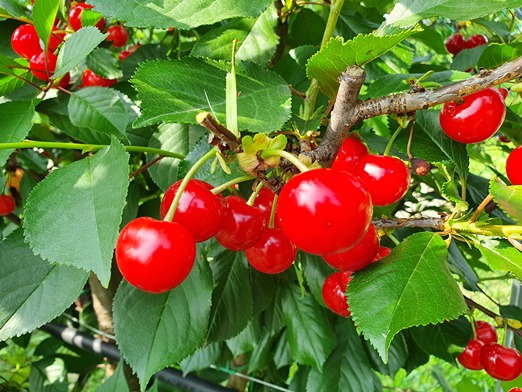Sour cherries (Prunus cerasus L.) are highly sought after in the European market due to their sensory properties and high nutritional value. Rich in antioxidants with health benefits, these cherries have been studied for over a decade by researchers in the Southern Steppe region of Ukraine.
The study analyzed 10 sour cherry cultivars from 2007 to 2019, focusing on the relationships between varietal characteristics, climatic factors, and fruit and stone weight. The cultivars that showed the best results in terms of fruit weight were "Griot Melitopolskyi," "Siyanets Turovtsevoi," and "Vstrecha," with average weights of 7.48 g, 7.59 g, and 7.87 g, respectively.
Conversely, the cultivar "Shalunia" displayed the lightest stone, with an average weight of 0.29 g. However, the overall average fruit weight of sour cherries under the study conditions in southern Ukraine was 5.93 g, with an average stone weight of 0.39 g. Moreover, the cultivar "Vstrecha" stood out not only for its average fruit weight but also for the best ratio between stone and pulp weight (4.82%), a crucial parameter for marketability and consumer appeal.
These data highlight significant variability among the cultivars and underscore the importance of genetic and environmental factors in determining final quality.
The key finding was the dominant influence of climatic conditions, accounting for 52.1% of fruit weight formation and 59.72% of stone weight formation. Among the most significant factors were the annual average relative humidity and May precipitation levels.

The study employed statistical methods, including RIDGE regression, to overcome multicollinearity issues among climatic variables. This approach enabled the development of reliable predictive models with a determination coefficient (R²) of 0.94 for fruit weight and 0.78 for stone weight.
The models allow for forecasting cherry quality during the growth phase, providing valuable tools for farmers and the agro-food industry. The ability to predict fruit quality based on climatic data helps adapt cultivation practices to maximize yield and minimize waste. For instance, cultivars such as "Vstrecha" and "Siyanets Turovtsevoi," which showed greater stability under variable climatic conditions, can be prioritized in areas with challenging climates.
Moreover, insights into pulp-to-stone ratios offer valuable information for the processing industry, which requires raw materials with specific characteristics.
The model also facilitates the identification of the most stable and productive cultivars under varying climatic conditions and helps optimize cultivation strategies. Additionally, it enables better planning of water and nutrient resources, supporting sustainable agricultural practices.
In conclusion, sour cherries reaffirm their value in the market. Thanks to the predictive tools developed, it is possible to integrate science and technology to enhance production quality, reduce waste, and meet the needs of increasingly sustainability-conscious consumers.
Source: IRYNA IVANOVA, MARINA SERDYUK, TETIANA TYMOSHCHUK, VIRA MALKINA, ANNA SHKINDER-BARMINA, ANTONINA DROBITKO, … YURII SAVCHUK. (2024). Prediction of Cherry Fruit Technological Characteristics by RIDGE-regression Method. Future of Food: Journal on Food, Agriculture and Society, 12(1). Retrieved from https://thefutureoffoodjournal.com/manuscript/index.php/FOFJ/article/view/691.
Images: SL Fruit Service
Andrea Giovannini
University of Bologna (IT)
Cherry Times - All rights reserved











